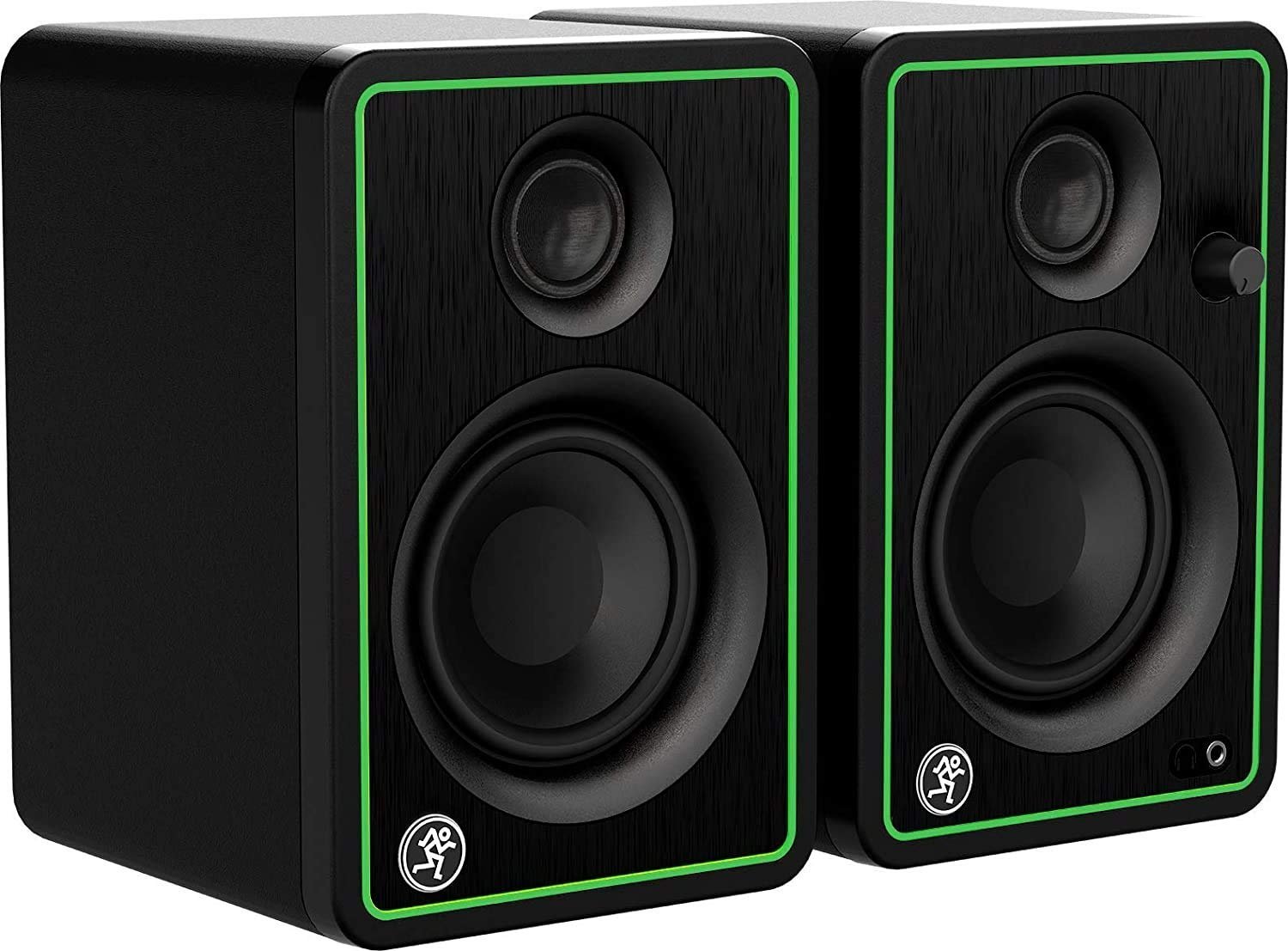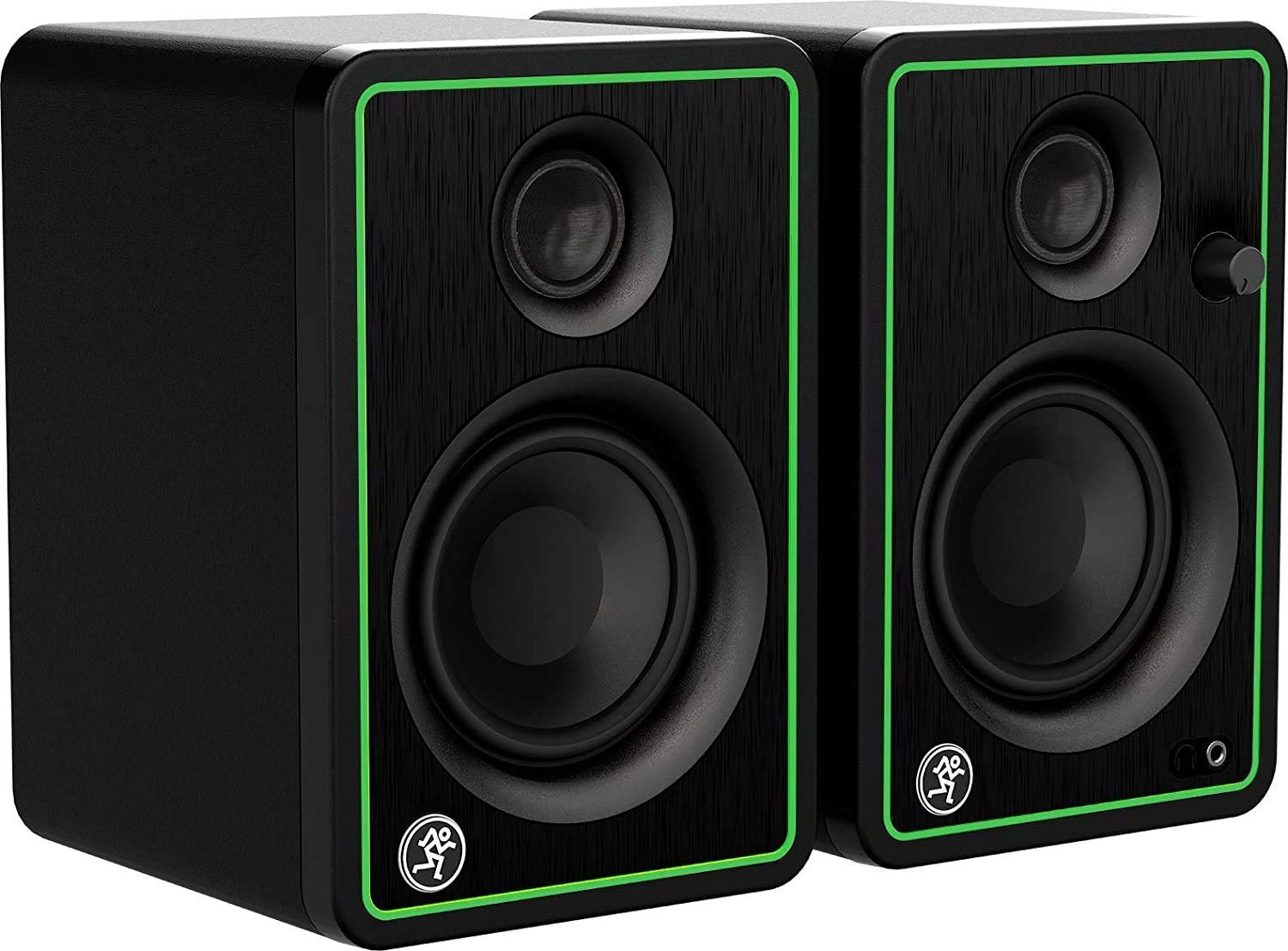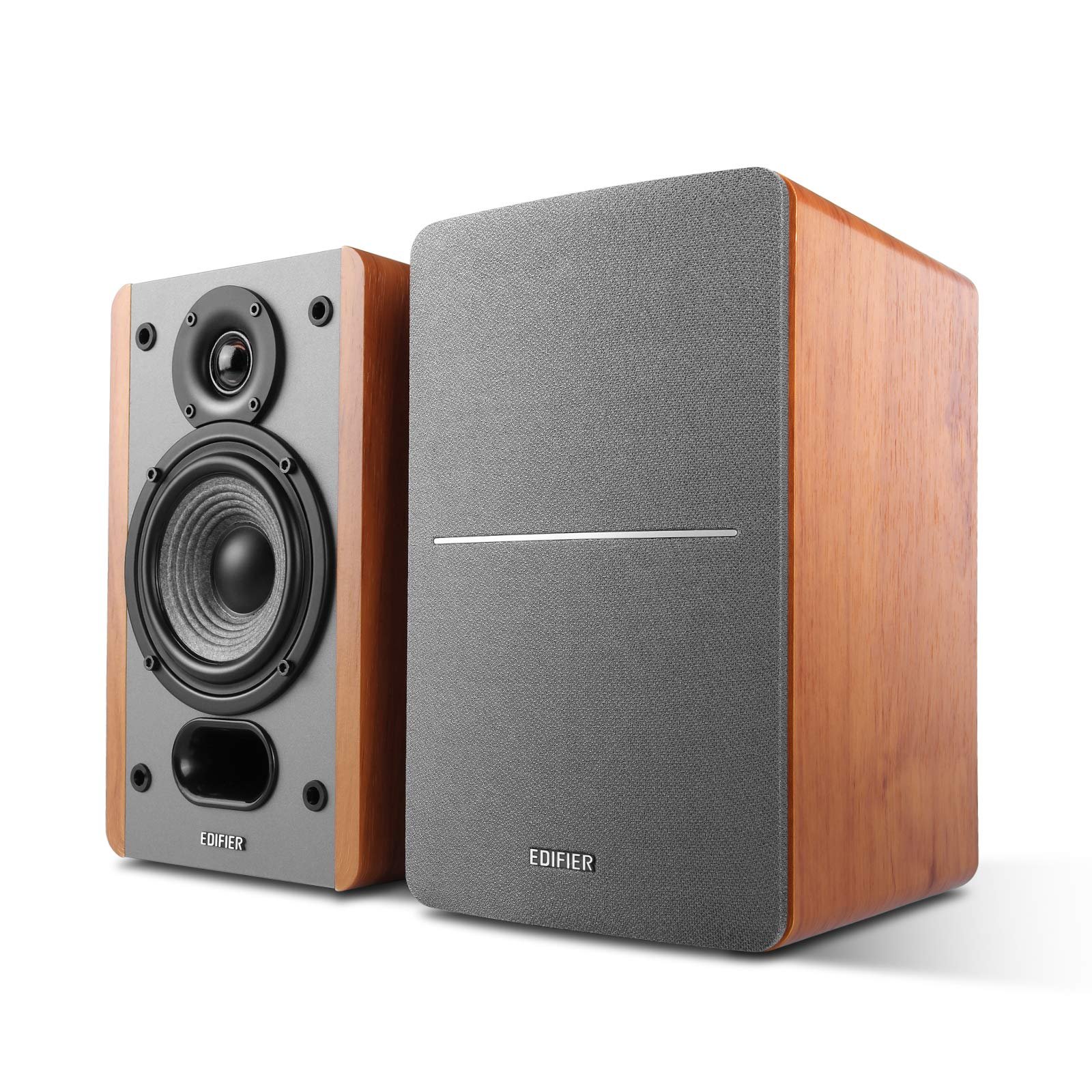In the world of audio production, studio monitors play a crucial role in ensuring that the sound you produce is as precise and transparent as possible.
While active studio monitors come with built-in amplifiers, passive studio monitors rely on external amplification.
This can offer more flexibility and control over your audio setup, allowing you to choose an amplifier that matches your specific audio needs and preferences.
Passive monitors are often favored in professional settings where customization and upgrade paths are important.
When you’re looking at passive studio monitors, there are a few key factors you should consider to make the best choice.
First, matching the right amplifier with your monitors is essential.
Not every amplifier will complement every monitor, so you’ll want to ensure compatibility in terms of power and impedance.
Additionally, room size may affect the size and power rating of the monitor you need, with larger spaces typically requiring more powerful units.
The materials and build quality of the monitors also play a significant role in how they sound and how long they’ll last.
Your decision should carefully weigh these aspects to find the best match for your audio setup.
A thoughtful choice in passive studio monitors will lead to a sound experience in your studio that’s both satisfying and effective, setting the stage for a deep dive into the best options available.
Top Passive Studio Monitors
When it comes to passive studio monitors, you’re looking for precision and reliability to make sure your music sounds just right.
We’ve gathered some of the best options to help you achieve a professional-sounding setup without breaking the bank.
Start your musical journey with these top-notch picks.
Mackie CR3-X Studio Monitors
If you’re hunting for budget-friendly studio monitors with reliable performance, the Mackie CR3-X is a solid choice.
- Ideal for compact setups with limited space
- Convenient front panel controls make adjustments easy
- Friendly price point for tight budgets
- Slight hissing noise may be noticeable
- Bass performance isn’t top-tier
- Lacks Bluetooth connectivity
The Mackie CR3-X studio monitors offer a sleek design with practical front-panel controls, making them perfect for small home studios or office desktops where space is at a premium.
These monitors stand out for their ease of use and multiple input options, providing versatility for connecting various devices.
Affordability is a strong suit for these monitors, making them an attractive option if you’re starting or on a budget.
You won’t be stretching your wallet, yet you’ll receive decent audio quality for everyday use, creative work, or casual listening.
Despite their benefits, these monitors do have a few drawbacks.
The absence of Bluetooth connectivity might disappoint those wanting wireless options, and some may notice a faint hissing noise during playback.
Additionally, while the bass response is reasonable, it might not satisfy hardcore audiophiles seeking the best bass reproduction.
There’s a lot to love about these monitors, especially considering the price range.
PreSonus Eris E4.5 Studio Monitor
These compact monitors deliver clear, studio-quality sound and are perfect for any music lover’s space.
- Perfectly balanced sound quality
- Compact design fits anywhere
- Versatile input options
- Limited bass output
- Extra cables may be needed
- Rear bass port may require careful placement
If you’re looking for a reliable studio monitor that won’t break the bank, the PreSonus Eris E4.5 might just be the right choice for you.
With its neutral sound profile, you can enjoy music and media without the harshness that some speakers can cause.
It’s designed to fit into small spaces, making it ideal for home studios or desktop setups.
The variety of inputs makes it easy to connect to different devices without hassle, and the front-panel controls add convenience.
These monitors are known for their precise audio delivery, essential for those who want detailed sound.
However, the bass might not be as deep as some users might expect, especially if you’re into low-frequency sounds.
Placement is also something to consider because of the rear-firing bass port.
Despite these minor drawbacks, it’s a solid option for creative projects or personal enjoyment.
Saiyin Passive Bookshelf Speakers
These speakers offer an impressive sound experience at a reasonable cost, making them an excellent choice for casual listeners seeking quality.
- Remarkable sound clarity
- Sleek wooden design
- Robust sound performance
- Requires an external amplifier
- No included speaker wires
- Lacks Bluetooth functionality
Saiyin’s Passive Bookshelf Speakers stand out with their elegant wooden cabinets, which add both style and sound quality to your setup.
Their design makes them a perfect match for any room, delivering sound that feels full and dynamic without taking up too much space.
These speakers are tailored for users who have a separate amplifier, making them an ideal choice for those who already have audio equipment.
With their crisp high frequencies and impressive bass, your music and movies will sound fantastic.
While they deliver in areas of audio performance and aesthetic, they might not be suitable for everyone.
If you’re looking for wireless convenience or plug-and-play ability, you’ll need to consider additional components.
However, if you’re prepared to complement them with the necessary gear, these speakers offer great value for a satisfying listening experience.
Edifier P12 Speakers
If you’re looking for stylish and efficient bookshelf speakers, the Edifier P12 could be a fitting choice.
- Elegant appearance complements any room decor
- Silk dome tweeters deliver crisp and clear high frequencies
- Built-in wall-mount offers versatile placement options
- Requires a separate amplifier for operation
- Bass may not satisfy those looking for deep lows
- Speaker wires could be longer
The Edifier P12 speakers offer a sleek design, perfect for enhancing the look of any room with their wood finish.
With silk dome tweeters, you can enjoy high frequencies that are crisp and full of detail.
Moreover, the built-in wall-mount bracket makes these speakers versatile, whether you prefer them on a shelf or mounted.
Keep in mind, these passive speakers need an amplifier to power them.
This setup allows you to customize their output to fit your taste, though it may pose a learning curve for newcomers to audio equipment.
Additionally, while they are great with mids and highs, pairing them with a subwoofer might be necessary if you crave a thumping bass.
Overall, these speakers are an excellent addition to a home theater or a surround sound setup.
They’re compact enough to fit almost anywhere, yet they produce a sound that fills the room.
If you prioritize aesthetics and clarity in the mids and highs, the Edifier P12 speakers are worth the consideration.
Edifier R1280T Speakers
If you want compact speakers with a stylish design and great sound, these could be the right choice for you.
- Multiple inputs, so you can connect more than one device with ease.
- Delivers clear and natural sound that’s ideal for studio use.
- Comes with a remote for convenient control.
- Lacks Bluetooth capability for wireless connections.
- Must be connected to a power source for operation.
- The wireless range is limited by auxiliary connectivity
The Edifier R1280T speakers offer a combination of aesthetic design and superior sound quality that could fit right into your home or office.
Their classy wooden finish not only looks good but is well-constructed with durable MDF.
These speakers do a great job of delivering natural sound, making them suitable for both music enthusiasts and casual listeners alike.
For those who appreciate simplicity, the dual AUX inputs make multiple connections easy without the hassle of switching cables.
This feature is perfect if you’re planning to use them with various devices like a PC or turntable.
The built-in controls and remote give you straightforward ways to adjust your experience without leaving your seat.
Despite their virtues, they do come with some limitations.
The lack of Bluetooth might be a dealbreaker if you’re looking for wireless convenience.
Additionally, make sure you consider the placement carefully, as you’ll need to plug them into a power outlet.
Even so, the overall experience they provide often outweighs these setbacks, making them a strong contender in the passive studio monitors market.
Buying Guide
Determine Your Needs
Before diving into the options, think about what you need from your passive studio monitors.
Are you mixing music, podcasts, or other audio? The type of content and your environment will influence your choice.
Key Features to Consider
Size and Space: Consider the size of the room.
Larger monitors can produce more sound but might not fit in smaller spaces.
Frequency Response: Look for monitors with a flat frequency response for accurate sound reproduction.
This helps in ensuring your mixes are accurate.
Power Compatibility: Check the power requirements.
Passive monitors need an external amplifier, so ensure compatibility and adequate power ratings.
Technical Specifications Table
| Specification | Description |
|---|---|
| Woofer Size | Impacts bass response |
| Tweeter Type | Affects high-frequency clarity |
| Impedance | Ensure it matches with your amplifier |
| Crossover | Determines frequency distribution |
Acoustic Room Treatment
Think about acoustic treatment.
Properly treated rooms can make a significant difference in monitoring accuracy.
Consider simple solutions like foam panels.
Budget
Always set a budget.
Prices can vary widely, so having a range helps narrow down your options.
Remember to account for additional costs, like stands or cables.
Trust Your Ears
When possible, listen before you buy.
Personal preference plays a huge role, and what sounds good to someone else may not suit you.
Visually appealing monitors might be tempting, but sound quality is key.
Frequently Asked Questions
Passive studio monitors have their quirks.
Understanding how they differ from active monitors, how to power them, and knowing about specific models like those from Yamaha or JBL can help you make an informed choice.
What’s the real deal with passive versus active studio monitors?
Passive monitors require an external amplifier to function, whereas active monitors have a built-in amp.
This makes passive monitors more versatile in certain setups, as you can pair them with different amps to achieve varying sound profiles.
Active monitors, on the other hand, offer a more plug-and-play experience since they have built-in power.
How do I power my passive studio monitors?
You’ll need a separate amplifier.
The amp should be matched to your monitors in terms of power output to get the best sound quality.
It’s important to check the impedance and power handling ratings of both the amp and your monitors to avoid damaging your equipment.
Any standout models among Yamaha’s passive studio monitors?
Yamaha has been a reliable choice for years.
The NS-10M is iconic in the industry for its dependable performance, famous for its flat frequency response that helps producers fine-tune mixes.
This model is widely used among professionals and is known for its accuracy in monitoring.
Are there affordable passive studio monitors that still rock?
Absolutely, there are budget-friendly options that don’t skimp too much on quality.
Brands like Behringer and Mackie offer models that deliver decent sound for the price.
These monitors might lack some high-end finesse, but they’re a great starting point for those just setting up their studio.
What should I expect when switching from active to passive monitors?
Switching to passive monitors might mean a bit of an adjustment.
You’ll need to handle external components like an amplifier, and it might take some tweaking to get the sound you want.
Active monitors often have built-in trims and EQ settings, so expect a bit more manual setup with passives.
Why would someone pick JBL passive monitors over others?
JBL is renowned for crafting monitors that offer solid builds and crisp, balanced sound.
Their passive models are often praised for their reliability and accuracy.
They provide a good bass response and clarity, which can be crucial for mixing and mastering.
JBL’s reputation for durability makes them a solid investment.






